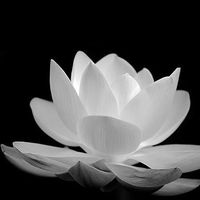## Bomma Shibari: Exploring the Art of Rope and Trust
Bomma Shibari, a Japanese art form rooted in ancient traditions, transcends the boundaries of mere bondage. It's an intricate dance between trust, submission, and control, where rope becomes a powerful tool of expression, communication, and exploration. This essay delves into the captivating world of Bomma Shibari, unveiling its historical origins, its core principles, and its significance as a unique form of art and expression.
### Part 1: Unraveling the Roots of Bomma Shibari
Bomma Shibari's origins can be traced back centuries to Japan's rich history of rope-based martial arts and traditional ceremonies. The word itself is a combination of two Japanese words: "bomma," meaning "rope," and "shibari," meaning "to bind." The earliest recorded instances of rope bondage in Japan were for practical purposes:
* Constraining prisoners: Shibari was employed by warriors to restrain captured enemies, relying on the strength and knotting techniques of the ropes.
* Ritualistic binding: In Shinto ceremonies and rituals, ropes played a significant role in purification and ceremonial offerings.
While these early uses laid the groundwork, Bomma Shibari evolved beyond its practical roots. The artistic and aesthetic aspects of rope manipulation emerged, transforming the practice into a form of performance art and expression.
### Part 2: The Art of Trust and Submission
Bomma Shibari, at its heart, is about trust. It's a collaboration between two individuals: the binder, who skillfully manipulates the rope, and the bound, who surrenders to the process. The binder's role is not one of domination, but rather a careful choreographer, ensuring safety and comfort throughout the experience.
This element of trust is crucial, for the bound is essentially placing their body and well-being in the hands of the binder. This act of submission is not a sign of weakness, but a conscious decision to explore the boundaries of physical and emotional vulnerability. The bound surrenders to the power of the rope, allowing themselves to be suspended, lifted, and transformed, both physically and psychologically.
### Part 3: Exploring the Language of Rope
Bomma Shibari's true beauty lies in the language of the rope. The intricate patterns and techniques used to bind the body are more than mere decorative elements. They become a form of communication, a visual story woven with each knot and loop. The binder's skill is evident in their ability to create unique and complex designs, incorporating traditional knots and innovative techniques to produce visually stunning and emotionally evocative results.
Each knot and technique holds a specific meaning and aesthetic impact:
* The "Hime Shibari" – a classic pattern, known for its delicate and flowing lines.
* The "Kokuu Shibari" – a more intense design that incorporates strong, angular lines, highlighting the power and control of the rope.
* The "Mizu Shibari" – utilizes rope's flexibility to create graceful, undulating shapes, evoking a sense of flow and movement.
The choice of knots and techniques allows the binder to express emotions, themes, and ideas through the ropes. This visual storytelling transcends the purely physical, inviting the viewer to engage with the aesthetic and symbolic power of the art form.
### Part 4: Bomma Shibari as Performance Art
Bomma Shibari is not just a static art form; it often takes the form of performance art. Performances range from intimate, private sessions to large-scale events, showcasing the skill and creativity of the binders while highlighting the grace and beauty of the bound.
* Live performances involve elements of movement, interaction, and storytelling, where the bound becomes a dynamic participant in the artistic expression.
* Photographic art captures the visual beauty of the intricate designs, emphasizing the harmony between rope and body.
These performances push the boundaries of Bomma Shibari, demonstrating its versatility and its capacity to engage audiences on multiple levels, ranging from purely aesthetic to profoundly emotional.
### Part 5: The Ethical Considerations of Bomma Shibari
While the art form emphasizes trust and consent, ethical considerations are paramount in Bomma Shibari:
* Consent and communication: Open and honest communication between the binder and the bound is essential to ensure a safe and enjoyable experience.
* Safety and security: Binders must undergo rigorous training, mastering knotting techniques and understanding the biomechanics of the body to prevent injury.
* Respect and boundaries: Bomma Shibari must be practiced with respect for both the binder and the bound.
It's crucial to understand that Bomma Shibari is not about dominance or control. It's about exploration, communication, and artistic expression. It requires a high level of trust, mutual respect, and clear understanding of each participant's boundaries.
### Part 6: Bomma Shibari in Contemporary Culture
Bomma Shibari has gained increasing recognition and appreciation in recent years, finding its way into contemporary art and cultural discourse.
* Artistic exhibitions: Galleries and museums are showcasing Bomma Shibari as a unique and fascinating art form, challenging traditional notions of beauty and expression.
* Film and photography: The art form's visual appeal has captured the attention of filmmakers and photographers, who are incorporating it into their artistic explorations.
* Workshops and communities: Dedicated workshops and online communities are providing spaces for individuals to learn, practice, and connect with others who share an interest in Bomma Shibari.
These developments indicate a growing interest in Bomma Shibari as a form of self-expression and exploration. It's an art form that challenges societal norms and invites us to view the human body in a new light.
### Conclusion
Bomma Shibari is a captivating art form that transcends the boundaries of mere bondage. It's a testament to the power of trust, collaboration, and artistic expression. From its ancient roots to its contemporary evolution, Bomma Shibari continues to inspire and captivate, offering a unique and compelling way to explore the interplay between rope, body, and the human spirit.
As the art form continues to evolve and gain recognition, Bomma Shibari stands as a powerful symbol of the boundless possibilities of human creativity, communication, and the beauty of the human form.


















Comment (0)